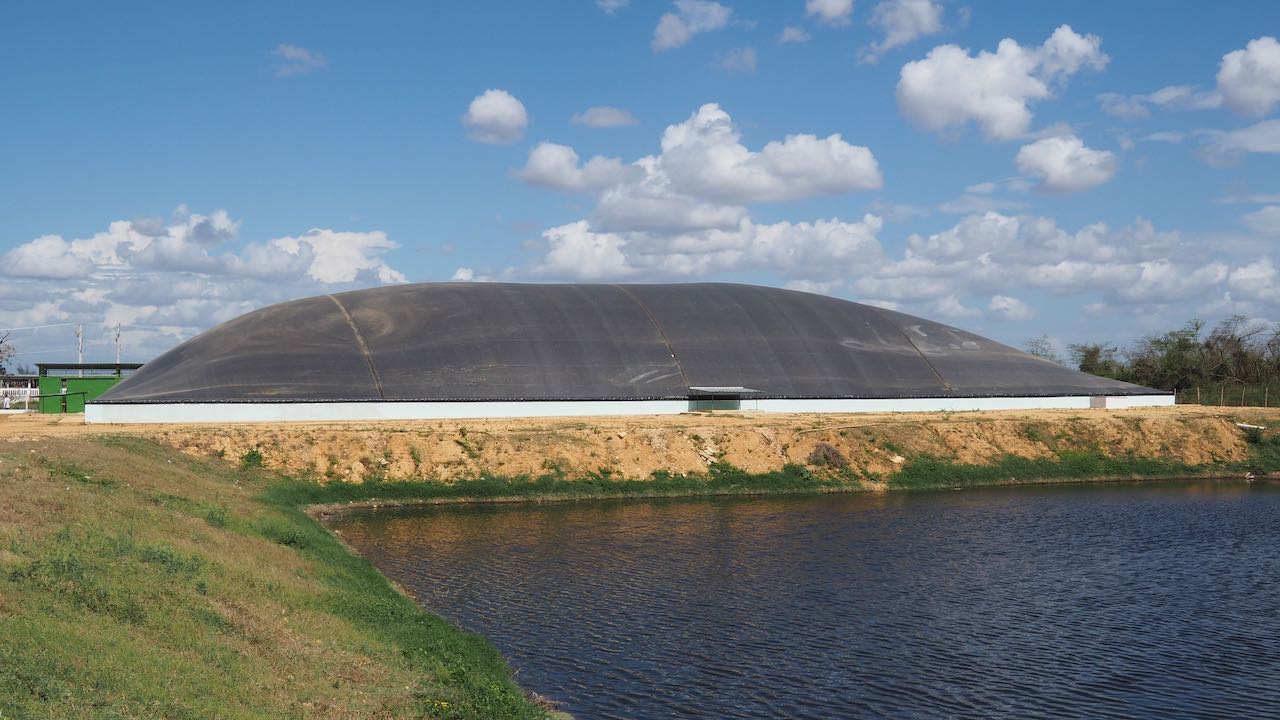SLAUGHTERHOUSE WASTE - BIOGAS - DIGESTER
Slaughterhouse waste is a very energy-rich waste stream of the meat industry. As such, it is an attractive sustrat to treat through anaerobic digestion for the production of biogas and energy. The waste from slaughterhouses, cattle, pigs, chickens, etc., can be treated and used in digesters for the production of biogas and energy. This biogas plant can process all animal by-products which may not be further utilized such as blood, hind gut, stomach content and fat scrubber content.

green water+red water
Based on the characteristic of the slaughterhouse waste, either liquid or solid, slaughterhouse waste is very suitable and has high potential to be treated anaerobically for biogas production. Generally, slaughterhouse solid wastes consists of animal manure, pieces of fat, greaseskin,viscera, lungs, traces of blood, tracheae, pancreas, parts of the intestines, ruminal content, meat, bone, meat, grit, hair and undigested feed which will contribute the biodegradable of organic matter. The green waters, composed of tripe and rumen washing waters, have a high organic load content and are ideal for the production of biogas.
Projects developed by aqualimpia in slaughterhouses
| Projects | Type | Activities | Country | Year |
| El Arreo | Cattle | Feasibility study | Costa Rica | 2012 |
| Carnes El Pazo | Cattle-pigs | Construction | Venezuela | 2013 |
| Macesa | Cattle | Feasibility study - final design | Nicaragua | 2014 |
| Proincasa | Cattle | Improvement and rehabilitaion | Nicaragua | 2014 |
| Nuevo Carnic | Cattle | Feasibility study | Nicaragua | 2014 |
| JBC | Cattle | Fesaibility study | Brasil | 2015 |
| Camaguey | Cattle | Construction | Colombia | 2017 |
| Picsa | Pigs | Construction | Panama | 2019 |
Slaughterhouse waste - wastewater produces biogas
The chemical oxygen demand of the wastewater mixtures of slaughterhouses (red water + green water + washing water) is in the order of 6,000 - 10,000 mg/L.
Anaerobic digestion is one of the best options for slaughterhouse waste management which will lead to production of energy-rich biogas. Can achieve a high degree of COD and BOD removal from slaughterhouse effluent at a significantly lower cost than comparable aerobic systems. The biogas potential of slaughterhouse waste is higher than animal manure, and reported to be in the range of 80-120 m3 biogas per ton of wastes.
Biogas can be used as fuel in generators for the production of electricity or in boilers for the production of steam. Using the biogas from animal by-products (ABP) digestion, the slaughterhouse facility may cover most of its heat demand and some of the electricity requirements.
A digester in slaughterhouse for 500 cattles/day can produce 2,500 m3 biogas usefull to install a 250 kW electricity generator. For each 1,000 m3 of biogas used to produce steam, a 20-25 BHP boiler can be installed.
CSTR LAGOON DIGESTER FOR SLAUGHTERHOUSE WASTE
covered lagoon digester for cattle slaughterhouse










